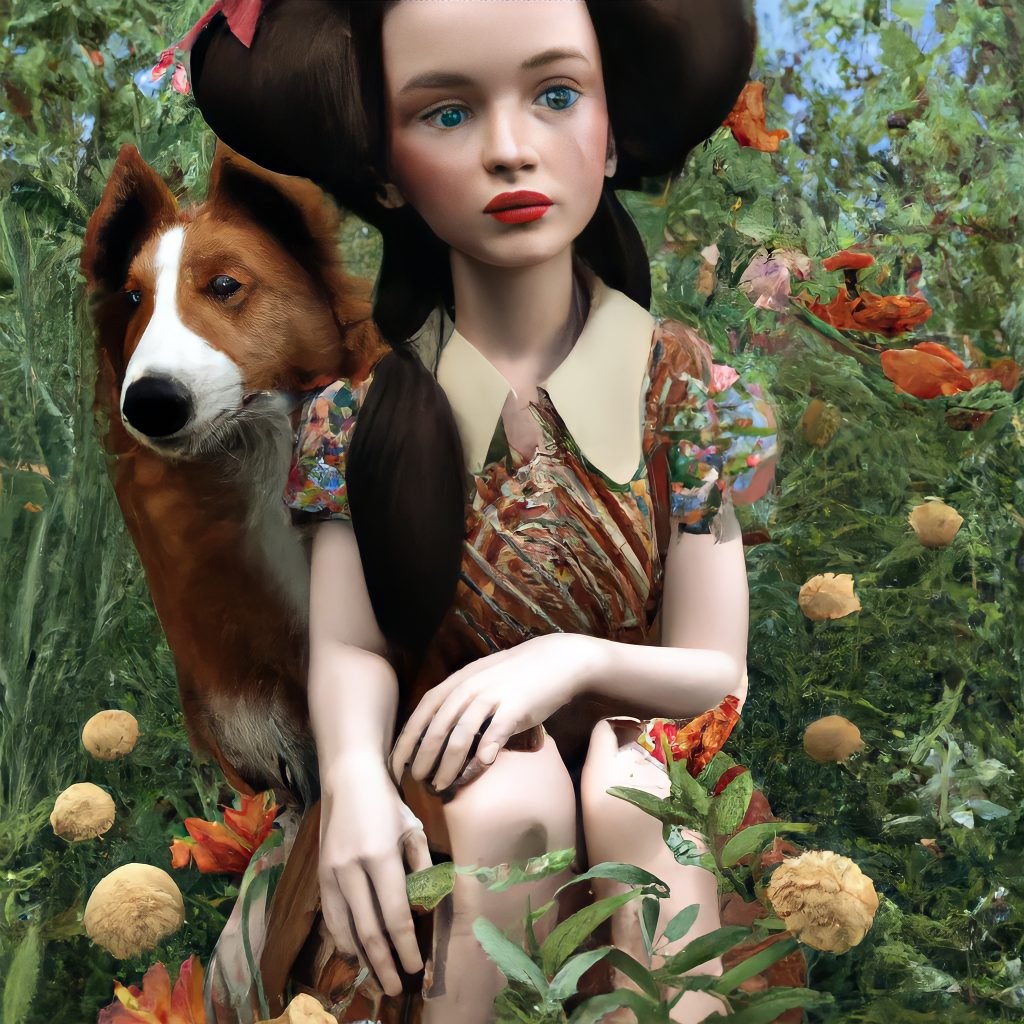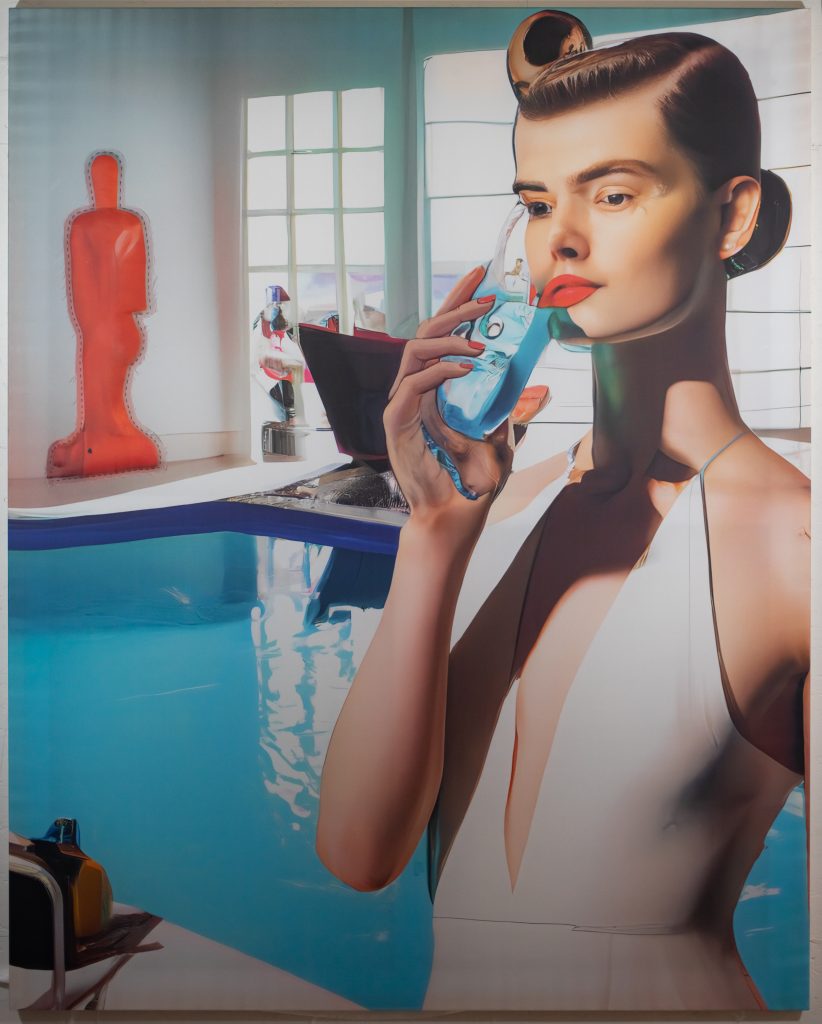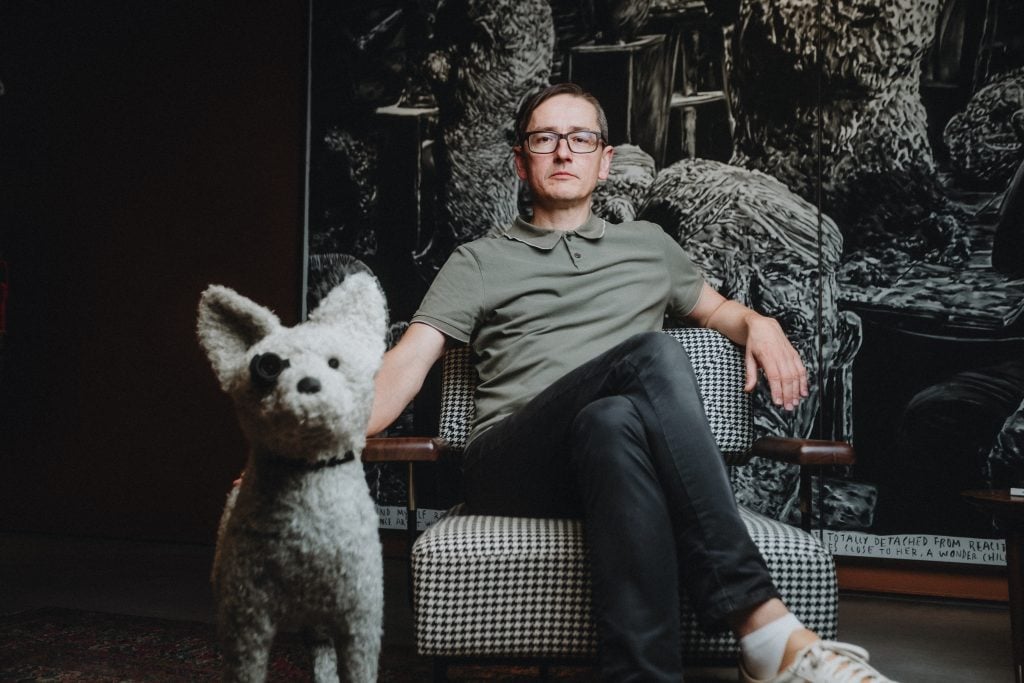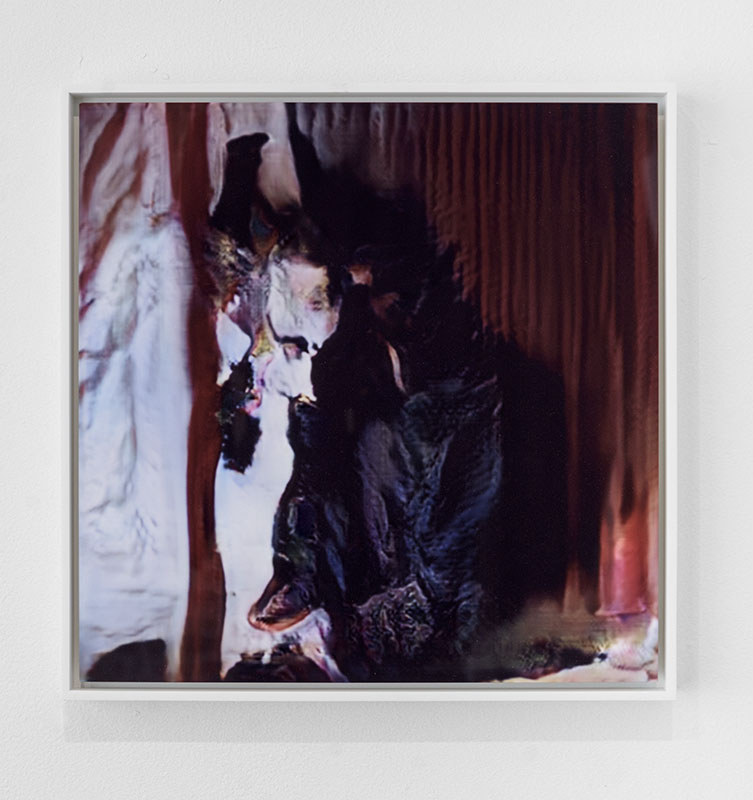Art & Tech
‘A Collaborator Who Understood My Vision’: Laurie Simmons, Casey Reas, and Mario Klingemann on How A.I. Is Fueling Creativity
The artists share how A.I. is reshaping their practices and our understanding of art.

The artists share how A.I. is reshaping their practices and our understanding of art.

Min Chen

This is part of a series on how artists are approaching the age of A.I.
It’s impossible to overstate the impact A.I. has had on the cultural and political landscape. With the emergence of accessible text-to-image generators, A.I.-produced images have proliferated online, in museums, across galleries, and at photography contests. They have provoked backlash and class action suits, fueled a writers’ strike, and even compelled a response from the White House.
But A.I., too, has long served as a tool for artists and a catalyst for creativity, enabling a collaborative form of art-making between human and machine. Still, in a world where anyone can now type in a text prompt and call up an image, where does that leave artists?
In the first part of a series exploring how artists are approaching A.I., we asked artists Laurie Simmons, Mario Klingemann, and Casey Reas for their thoughts on how the tool is reshaping their practices and our understanding of art. Some are long-time practitioners of A.I. art; others are just getting to grips with the technology—but all are coming to terms with a new era of art-making in a machine age.

Laurie Simmons, Autofiction: Indoor Swimming Pool (Anne) (2023).
Simmons’s recent experiments with text-to-image generators have birthed some surreal if not eerie scenes of women, their faces deformed, lounging by a neon-lit pool or tucked away in pastel-hued rooms. The works recall the artist’s signature staging of dolls in her 1970s and ’80s photographs, but newly mediated by an algorithm. A.I. is a tool, she said, no different from a camera—except one does way more thinking and talking back than the other.
What does A.I. mean to you as an artist?
A.I., specifically, text prompt to image, is a tool to make pictures that I’ve been using for more than a year. I feel the same way about using this tool as I did when I first picked up a camera.
There are other tools I have used in my decades as an artist: Xerox machines, the New York Public Library Picture Collection, a rear screen projection system, a computer, and Photoshop. I am no more an “A.I. artist” than a “photographer”—I am simply an artist using technology to make images.
This is the first time I’ve used a tool that is growing and developing faster than I can think. The technology is learning from me as I use it, possibly getting to know me visually better than I know the new work I am producing.
What has surprised you the most in your work with A.I.?
I love playing with language, writing, and making titles for my work, so I felt naturally drawn to trying to generate images from text. After my first attempts with A.I., I was shocked by how much the pictures looked like they came right out of my own subconscious mind. I felt I made them with a collaborator who understood my vision. This understanding plays into all the questions about A.I. that scare us the most.
Working with A.I. imagery is much like your dog dragging you down the street and a friendly stranger asking you: “Who’s walking who?”

Mario Klingemann with his robot dog A.I.C.C.A. (2023). Photo © Courtesy of ONKAOS.
From an autonomous artist to a robot dog powered by machine intelligence—Klingemann’s forays into A.I. have been as much about exploration as meta-commentary on how the technology is reshaping human culture and consciousness. Fitting for an artist awakened by Marvin Minsky’s seminal text on cognitive systems, his work with A.I. goes beyond novelty, and rather stirs questions and dialogue.
What does A.I. mean to you as an artist?
As an artist, A.I. is a vibrant texture on my canvas, a unique instrument I wield with curiosity. Working with A.I. allows me to blend the technical with the philosophical, the visual with the cerebral. By drawing it into the realm of art, a place we associate with human creativity and emotion, I invite people to see A.I. not as an alien or intimidating force, but as something that can be relatable, understood, even tamed.
As an artist that has long been creating with and alongside A.I., what do you make of its recent developments?
In a sense, these developments democratize the creation process, providing new platforms for people to express their creativity and I think it is great that also those with non-technological backgrounds can make their voices heard.
However, the flip side to that coin is that the sheer ease of use can sometimes devalue the creative journey. As someone who has tread the winding, uphill road of working with early-stage A.I., it is a little bittersweet. One might argue that the effort, the struggle, the hair-pulling, is part of the charm of creation—it’s what gives depth and significance to a piece of art. Each masterpiece ought to have a battle story, don’t you think?
How do you see the relationship between A.I. and human artists evolving into the future?
Looking into the future, I perceive that our relationship with A.I. will be one of collaboration rather than competition. A.I.’s strength lies in its ability to analyze patterns and produce volume, but it lacks the nuances of human perception, emotion, and intuition. Once we understand these limitations, we can channel A.I.’s capabilities to our advantage, making it an extended tool of our creative exploration rather than a threat to human artistry.

Casey Reas, Untitled Film Still 3.5 (2020). Courtesy Bitforms gallery, New York. Photo: Emile Askey.
To make his intricate, abstract artworks, Reas has long deployed processing, generative algorithms, and other multimedia in a way he considers collage. Except, per his analogy, where traditional collage engages with tactile material more akin to chunks of rock, working with machine intelligence presents a more fine-grained approach.
What does A.I. mean to you as an artist?
The name A.I. doesn’t really mean anything to me—that’s a broad term. Intelligence is intelligence, but I’m more interested in behavior and synthesis and collage. I always train my own datasets rather than working with the larger models that are pre-trained. I think training datasets is where a lot of the agency comes in.
I’m really interested in getting outside of myself, getting our own biases—techniques of randomness and chaos, and chance operations that have been around with artists like John Cage, and using machine learning to get outside of human perception and to get in some other form of pattern recognition. For me, the agency as an artist comes in responding to that.
How do you see the emergence of A.I. generators reshaping art-making?
A.I. has the potential to transform a wide range of the arts in the way that photography did. Something will likely emerge out of it that nobody can foresee right now and that’s really interesting.
I feel that no matter what kind of model it is, there’s still room for artists to be the complete authors of that work. I was at MoMA last week looking at the AbEx collection, and there’s always this stereotype of, “oh, it just looks like someone threw a bucket of paint on the canvas and anybody can do that.” I think it’s like that with machine learning too: artists can dig in deep and they can make things that really make us feel and that really express.
There’s, of course, all the discussions that need to be had about the ethics of these training sets—the way that they’re being trained with things that don’t have the consent of a lot of the artists involved. The danger of deep fakes and the cultural dangers around that is terrifying. My own approach as an artist has always been to dig in to test and explore and experiment, and I think that needs to be happening simultaneous to all these other conversations too.
More Trending Stories:
Art Dealers Christina and Emmanuel Di Donna on Their Special Holiday Rituals
Stefanie Heinze Paints Richly Ambiguous Worlds. Collectors Are Obsessed
Inspector Schachter Uncovers Allegations Regarding the Latest Art World Scandal—And It’s a Doozy
Archaeologists Call Foul on the Purported Discovery of a 27,000-Year-Old Pyramid
The Sprawling Legal Dispute Between Yves Bouvier and Dmitry Rybolovlev Is Finally Over